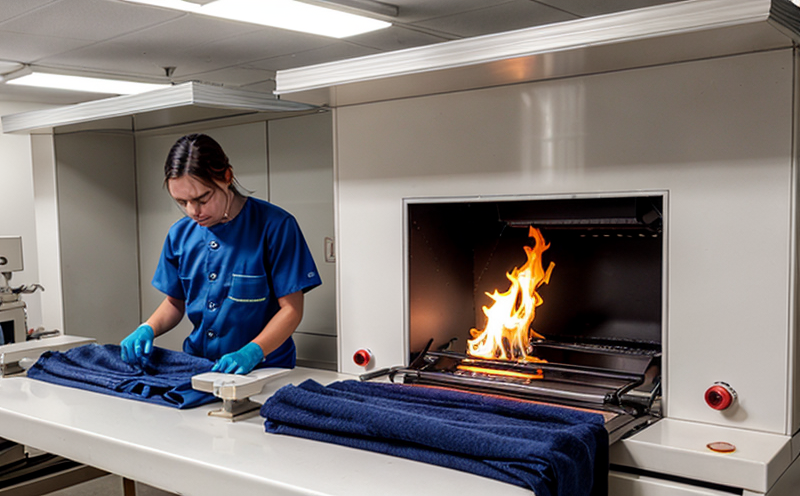Fire Resistance Testing of Cotton Fabrics
The fire resistance testing of cotton fabrics is a critical aspect in ensuring public safety and compliance with international standards. This service involves evaluating the flammability properties of cotton textiles to determine their resistance against ignition and flame spread. Cotton, being one of the most widely used natural fibers, must meet strict criteria to prevent potential hazards during use.
The process typically begins with specimen preparation where samples are cut into standard sizes that mimic real-world conditions. The testing can be conducted using various apparatus such as Cone Ignition Apparatus or Vertical Flame Test Apparatus. These tests follow established protocols like ISO 13565-2 and ASTM D6413, which provide clear guidelines for the procedure.
The results of these tests are crucial for manufacturers to ensure their products meet regulatory requirements. Compliance with standards such as NFPA 701 or EN 13976 is essential for textile fabrics intended for use in public spaces like furniture upholstery and seat covers, curtains, and wall coverings.
Real-world applications of this testing include the development of safer home furnishing products. For instance, flame retardant finishes applied to cotton textiles can significantly reduce the risk of fire spread. In addition, the testing helps in the design of clothing that is suitable for high-risk environments such as hospitals and emergency services.
Understanding the performance parameters under controlled conditions provides insights into how fabrics behave when exposed to flames. This information is vital for quality managers and R&D engineers working on developing new textile products or improving existing ones. It also plays a role in procurement decisions where suppliers must demonstrate compliance with specified flammability limits.
| Test Parameters | Description |
|---|---|
| Specimen Preparation | Cotton fabrics are cut into standard sizes as per the testing protocol. |
| Instrumentation | Use of Cone Ignition Apparatus or Vertical Flame Test Apparatus following ISO and ASTM standards. |
| Data Collection | Measurements include ignition time, flame propagation rate, and heat release. |
The data collected from these tests are used to generate comprehensive reports that detail the performance of each fabric sample. These reports serve as valuable resources for quality assurance teams in verifying product safety before they reach consumers or end-users.
Scope and Methodology
| Test Parameters | Description |
|---|---|
| Specimen Preparation | Cotton fabrics are cut into standard sizes as per the testing protocol. |
| Instrumentation | Use of Cone Ignition Apparatus or Vertical Flame Test Apparatus following ISO and ASTM standards. |
| Data Collection | Measurements include ignition time, flame propagation rate, and heat release. |
Industry Applications
- Home furnishing products like sofas and chairs
- Curtains and wall coverings in public spaces
- Clothing for high-risk environments such as hospitals and emergency services
- Children's clothing to ensure safety during playtime
The fire resistance testing of cotton fabrics is essential not only in the manufacturing sector but also for compliance with international regulations. Products that meet stringent flammability limits are safer and more trusted by consumers, enhancing brand reputation.
Environmental and Sustainability Contributions
- Cotton is a renewable resource that can be recycled and reused without harming the environment
- The fire resistance testing ensures that cotton textiles are used safely, reducing the risk of accidental fires which in turn helps protect natural resources from being contaminated by waste materials.
- Compliance with flammability standards reduces the need for potentially harmful flame retardants and other chemicals, thus promoting a more sustainable approach to textile production.
The fire resistance testing of cotton fabrics contributes significantly to environmental sustainability. By ensuring that textiles are safe and do not pose a risk when exposed to flames, manufacturers can reduce waste and improve overall resource efficiency in the lifecycle of these products.





